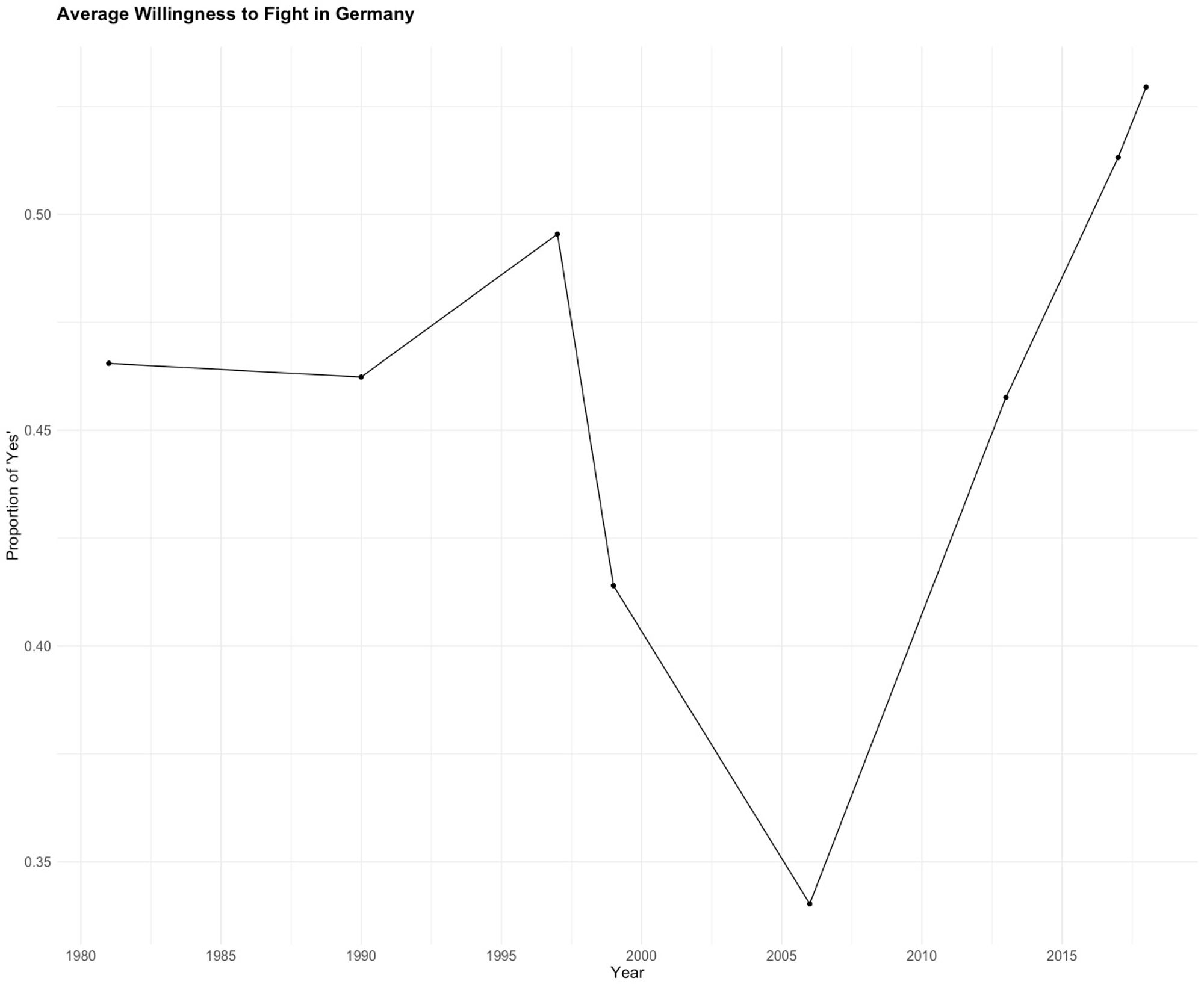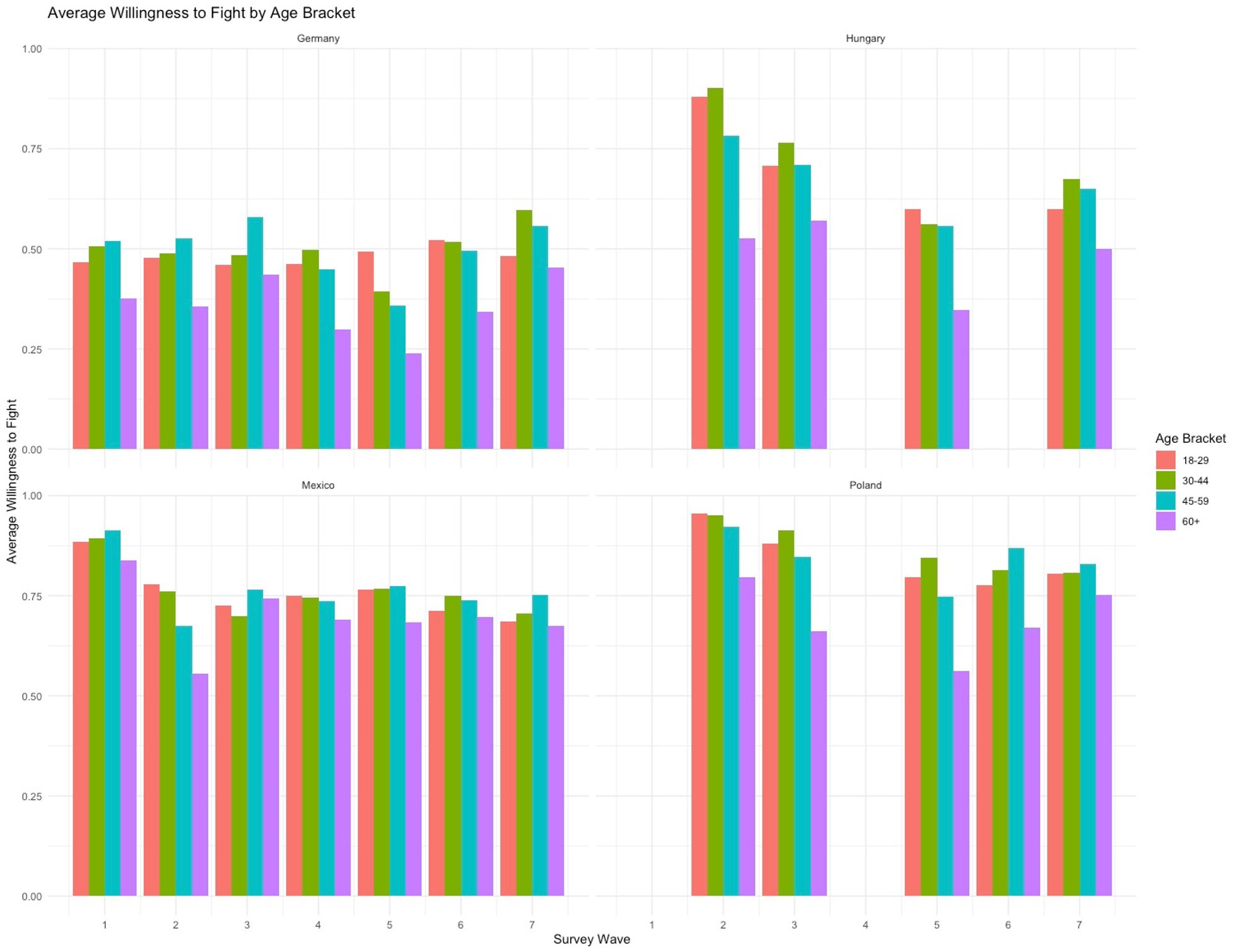AS
Alexander Sorg
@alexsorg.bsky.social
Post-doc VU Amsterdam | Fellow Hertie School
Research: Data Analysis & Nuclear Weapons & Willingness to Fight
134 followers140 following29 posts
So sehen die Antworten der World und European Value übrigens für Deutschland aus (ohne "Don't know") Die Ergebnisse sind also höher als in der zitierten Umfrage, das kann an vielen Faktoren liegen (Umfragedesign, Fragestellung, Zeitpunkt der Umfrage usw.)

Im zitierten wird auch auf eine interessante Nebenbeobachtung hingewiesen: Ältere Menschen scheinen weniger gewillt zu sein zu kämpfen. Laut den Daten der WVS/EVS ist dies ein weit verbreitetes Phänomen. Hier am Beispiel von 4 zufälligen Ländern im Zeitraum 1980-2021:

AS
Alexander Sorg
@alexsorg.bsky.social
Post-doc VU Amsterdam | Fellow Hertie School
Research: Data Analysis & Nuclear Weapons & Willingness to Fight
134 followers140 following29 posts